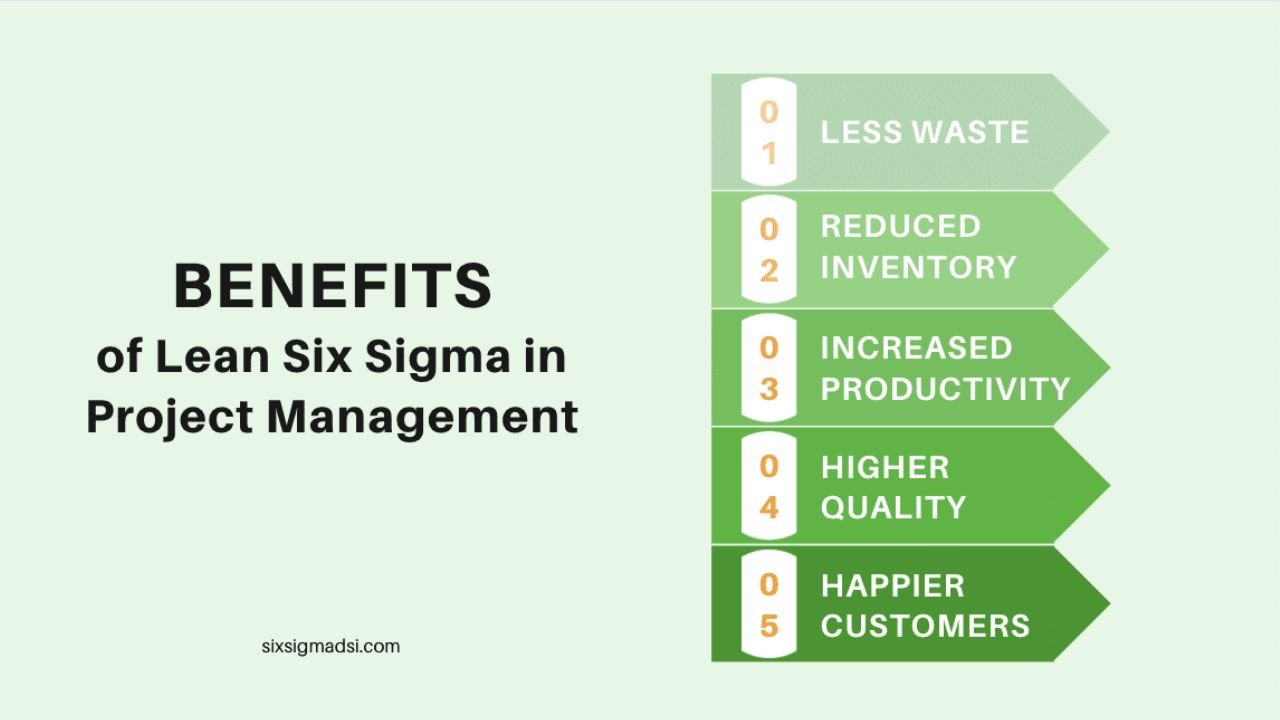Lean and Six Sigma methodologies are great separate methods for process improvement and efficiency. Their fusion – Lean Six Sigma, is the most widely used methodology today. In this blog, let’s understand how you can conduct Effective Project Management with the help of Lean Six Sigma.
What Is Lean?
The identification and elimination of waste in industrial processes served as the foundation for the entire Lean Project Management philosophy. Lean manufacturing, which was first introduced by Toyota or Henry Ford, depending on who you ask, was all about reducing expenses, getting rid of waste in both goods and processes and overall being as “lean and mean” as you could to achieve maximum efficiency. Toyota referred to the process’s core as locating and getting rid of the “seven deadly wastes.”
- Overproduction. When production exceeds the demand for the product, wastage happens.
- Waiting. This includes waiting on the shop floor between steps in the line or waiting for supplies or equipment.
- Transporting. This covers excessive movement of inventory, causing the possibility of damage or even excessive movement within the manufacturing process itself.
- OverProcessing. If there are unnecessary steps in the manufacturing process, then it wastes the time of the team.
- Inventory. Too much stock on hand. During the pandemic, many companies combatted supply chain delays by stocking up on inventory. We think that’s a mistake.
- Excess motion. This means getting from Point A to Point B on the floor, extra walking, lifting, and reaching. Can things be configured more efficiently?
- Defects. Defects in products happen to the best of us.
- People. This is the eighth waste that Toyota didn’t identify. It is the waste that occurs when the full potential of teams and managers isn’t unveiled and their energy isn’t being channelled in the right direction.
Examining all of these areas of “waste” in your operation will help you become more efficient and ultimately more profitable. In other words, lean and mean.
What Is Six Sigma?
Six Sigma, at its most basic level, is about quality control and minimizing flaws and defects. It is data-driven and statistical and aims to improve cycle time while eliminating or reducing defects in manufacturing. It uses stats, data analysis, and project management techniques to improve the whole process.
The Six Sigma team applies its practices to rectify the problem and create a product of premium quality for the user. The end goal of this methodology is to create products or services with less than 3.4 defects per million products or services produced.
Lean and Six Sigma are both great methods. But it is not a Lean vs Six Sigma debate anymore. Businesses have integrated the best of both methods – combining efficiency with quality products with Lean Six Sigma.
Lean Six Sigma
Lean Six Sigma is a methodology that integrates Lean and Six Sigma to assist firms in expediting certain processes, allowing them to cut waste and solve issues more quickly while adding value for their customers. It blends the Six Sigma emphasis on defect and variation reduction with the waste-reduction philosophy of the Lean approach. Combining Lean with Six Sigma yields a potent technique that helps companies stay on budget and ahead of schedule while establishing procedures that benefit the company and its workers and increase production, value addition, and cost savings.
Lean Six Sigma’s primary goal is to save waste by eliminating process variability and establishing a continuous flow between steps in business operations. Defects, overproduction, waiting, underutilized talent, transportation, inventory, motion, and extra-processing are the eight categories into which the technique divides waste. Thus, by eliminating these wastes, you can fix issues quickly, cut down on inefficiencies in the processes, and increase output.
Lean Six Sigma & Disciplined Agile: How Are They Related?
While process improvement and value delivery to businesses are the goals of both Lean Six Sigma and Disciplined Agile, they approach this objective differently and with various focal points.
The main goals of Lean Six Sigma are waste elimination, variation reduction, and process efficiency and quality improvement. It does this by combining Six Sigma approaches—which concentrate on lowering faults and enhancing consistency through statistical analysis and data-driven decision-making—with Lean concepts, which seek to simplify processes and get rid of non-value-adding activities.
Conversely, Disciplined Agile offers direction on how to tailor Agile methods to suit the particular requirements of a company and its initiatives. It places a strong emphasis on adaptation, flexibility, and putting results ahead of outputs. Beyond software development, disciplined agile covers every aspect of the value stream, including operations, finance, IT, and more, to improve your way of working.
Even though Lean Six Sigma and Disciplined Agile have separate histories and employ different methodologies, they could complement each other nicely. Lean Six Sigma may help find and remove waste and inefficiencies in operations, while Disciplined Agile can provide a flexible framework for improvements and value. Depending on their unique needs and goals, organizations might decide to combine components of both approaches to get the best outcomes in process improvement and value delivery.
Conclusion
To sum up, the main objective of Lean Six Sigma is to reduce waste through the elimination of process variability and the establishment of a continuous flow across business operations processes. The approach separates waste into eight categories: defects, overproduction, waiting, underused talent, transportation, inventory, motion, and extra-processing. Once these types of waste are minimized, your business will be able to enhance productivity, decrease process inefficiencies, and resolve issues more rapidly. Organizations may achieve process improvement and value delivery using the different but complementary approaches provided by Lean Six Sigma and Disciplined Agile. A flexible framework for customizing Agile methods to meet organizational needs is offered by disciplined agile. Organizations may increase efficiency, improve production, and simplify operations by utilizing the qualities of both techniques.
